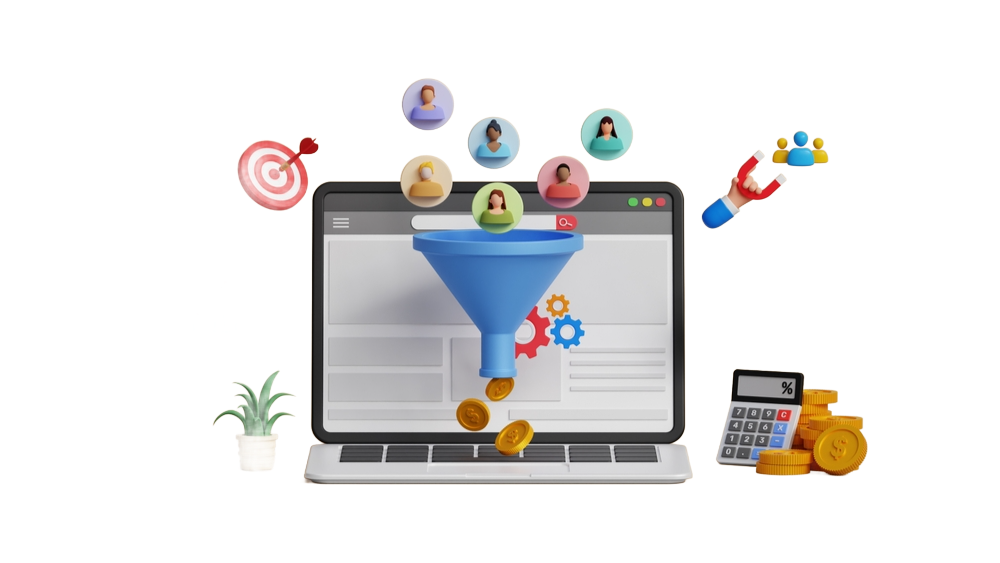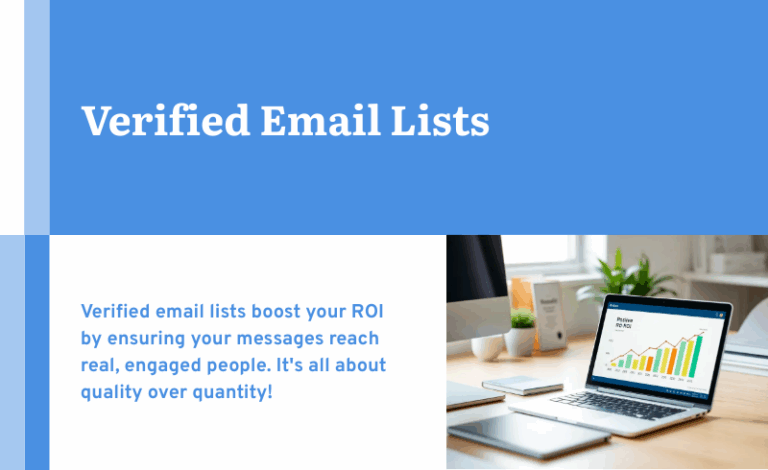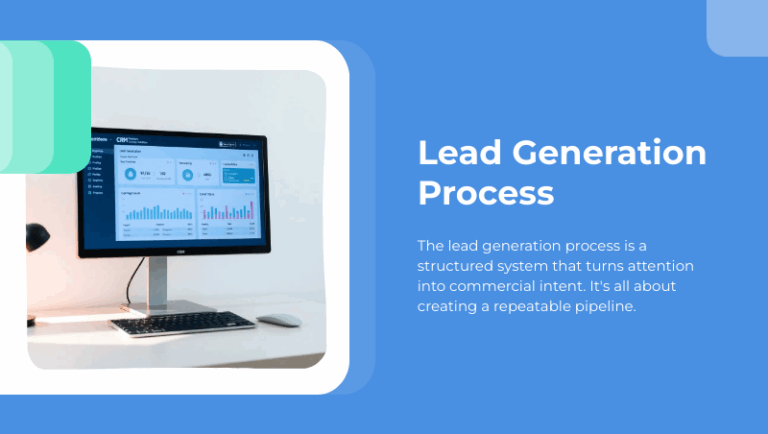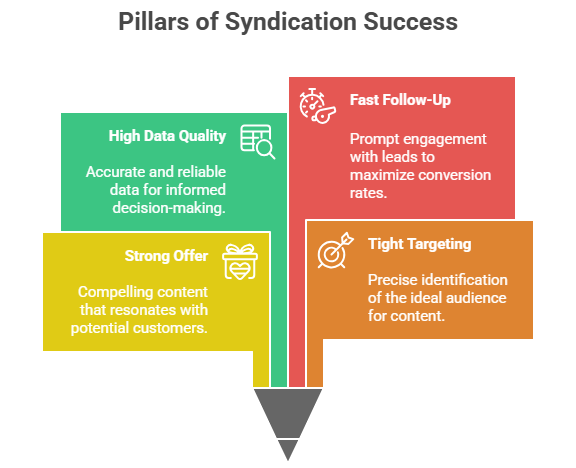
I. Introduction to Marketing Automation
Understanding the Power of Marketing Automation
Marketing automation has become a cornerstone of modern business strategies, enabling companies to streamline their operations and engage with customers more effectively. As businesses increasingly rely on digital tools to meet customer expectations, understanding what marketing automation is and how it works is essential for staying competitive.
What Marketing Automation Means for Businesses
Marketing automation refers to the use of software and technology to handle repetitive marketing tasks across various channels, such as email, social media, and websites. It allows marketers to design workflows that send personalized messages, track customer behavior, and analyze campaign performance—all with minimal manual intervention. This approach goes beyond simple task delegation; it integrates multiple tools and platforms to create a seamless customer experience.
At its core, marketing automation is about improving efficiency while maintaining a personal touch. It ensures that businesses can deliver the right message to the right audience at the right time, leveraging data-driven insights to achieve better outcomes.
The Growing Need for Marketing Automation
The digital age has dramatically increased the volume of interactions between businesses and their customers. Managing these touchpoints manually is no longer feasible for most organizations. Marketing automation solves this challenge by scaling operations without sacrificing quality.
For example, a small business might use automation to send welcome emails to new subscribers, while a large enterprise might implement complex workflows to nurture leads through a multi-step sales funnel. Regardless of size, the benefits are universal: saved time, reduced errors, and enhanced customer relationships.
A Brief Look at the Evolution of Marketing Automation
Marketing automation has come a long way from its origins in email marketing. Early tools focused primarily on automating email campaigns, but as technology evolved, so did the scope of automation. Today, robust platforms offer features like customer segmentation, predictive analytics, and artificial intelligence.
The growth of marketing automation mirrors broader trends in technology and consumer behavior. As customers demand more personalized and timely interactions, businesses must adapt by adopting tools that enable these capabilities. This shift has transformed marketing automation from a “nice-to-have” tool into a critical component of any successful marketing strategy.
Key Features That Define Marketing Automation
Marketing automation platforms are equipped with a wide range of features designed to enhance marketing efforts. Here are some of the most impactful capabilities:
- Email Campaign Automation: Crafting personalized email workflows that respond to customer actions, such as signing up for a newsletter or abandoning a shopping cart.
- Lead Scoring: Assigning values to potential customers based on their engagement levels, making it easier to prioritize leads.
- Customer Segmentation: Categorizing audiences into specific groups for more targeted campaigns.
- Real-Time Analytics: Providing actionable insights into campaign performance to help marketers refine their strategies.
These tools work together to create a cohesive system that aligns marketing efforts with customer needs and business goals.
Why Marketing Automation Matters More Than Ever
As digital channels proliferate, maintaining a consistent and effective presence across them has become increasingly challenging. Marketing automation offers a solution by enabling businesses to scale their operations without overwhelming their teams. It also facilitates data collection and analysis, which are crucial for understanding customer behavior and improving decision-making.
Consider a scenario where a business wants to increase customer retention. Using automation, the business could set up workflows to send personalized product recommendations, follow-up surveys, and exclusive offers based on individual customer preferences. This kind of targeted engagement not only enhances the customer experience but also drives long-term loyalty.
RELATED: Key Benefits of Marketing Automation
Emerging Trends in Marketing Automation
The field of marketing automation continues to evolve, with new trends shaping its future. Artificial intelligence, for instance, is being integrated into platforms to provide deeper insights and predictive capabilities. Similarly, the rise of omnichannel marketing has prompted automation tools to expand their reach, ensuring a seamless experience across all touchpoints.
As businesses navigate these changes, staying informed about the latest developments in marketing automation will be key to leveraging its full potential.
Setting the Foundation
Marketing automation is more than just a set of tools—it’s a strategic approach to modern marketing. By understanding its components and applications, businesses can unlock new levels of efficiency and effectiveness, ultimately building stronger connections with their customers.
II. Key Components of Marketing Automation
Breaking Down the Essential Parts of Marketing Automation
Marketing automation is built on a foundation of interconnected components that work together to streamline processes and improve customer engagement. Each piece of the puzzle plays a unique role, ensuring businesses can achieve their goals efficiently. Understanding these key components is vital for leveraging the full potential of marketing automation.
How Lead Management Creates Stronger Connections
One of the most important aspects of marketing automation is its ability to manage leads effectively. Lead management encompasses several tasks, all designed to track, nurture, and convert potential customers.
- Lead Scoring: This process assigns value to leads based on their interactions with the business. For instance, opening an email, clicking on a link, or downloading a resource may increase a lead’s score. Higher scores typically indicate greater interest, helping sales teams focus on the most promising prospects.
- Lead Nurturing: Not all leads are ready to make a purchase immediately. Lead nurturing involves providing targeted content to guide them through the decision-making process. Automated workflows can send emails, share blog posts, or invite leads to webinars, ensuring consistent engagement.
- Actionable Insight: Analytics tools within automation platforms offer detailed insights into how leads interact with campaigns. This data helps businesses refine their strategies and improve their conversion rates.
The Role of Email Marketing in Driving Engagement
Email marketing remains one of the most effective ways to reach and engage with audiences, and automation enhances this channel significantly. By automating email workflows, businesses can deliver timely, personalized messages to their subscribers without manual intervention.
- Drip Campaigns: These pre-set series of emails are triggered by specific user actions, such as signing up for a newsletter or abandoning a shopping cart. Each email in the sequence builds on the last, gradually moving the recipient closer to a desired action.
- Personalization at Scale: Automation tools can use customer data to tailor emails with relevant product recommendations, personalized greetings, and dynamic content. This approach increases open rates and improves customer satisfaction.
How Customer Segmentation Boosts Campaign Effectiveness
Marketing campaigns are most effective when they speak directly to the needs and interests of the audience. Customer segmentation allows businesses to divide their audience into distinct groups based on various factors such as demographics, behavior, and purchase history.
Segmentation ensures that each group receives messages that are highly relevant to them. For example, a retail business could segment its audience into categories like frequent buyers, first-time shoppers, and inactive customers, then create campaigns specifically for each group. This targeted approach drives better results by delivering the right message to the right people.
Why Analytics and Reporting Are Non-Negotiable
Data is at the heart of marketing automation. Analytics and reporting tools within automation platforms provide a clear picture of campaign performance, enabling businesses to make informed decisions.
- Campaign Metrics: Businesses can track key performance indicators such as open rates, click-through rates, and conversion rates. These metrics reveal what’s working and what needs adjustment.
- Customer Behavior Insights: Detailed data on how customers interact with content—whether it’s an email, social media post, or landing page—offers valuable clues for refining strategies.
- Return on Investment: Automation tools calculate ROI for campaigns, helping businesses allocate resources more effectively.
Enhancing Customer Experiences Through Automation
Marketing automation isn’t just about efficiency; it’s also about creating seamless and personalized experiences for customers. By combining the components above, businesses can ensure that every interaction feels relevant and meaningful.
For example, an e-commerce company might use automation to send a welcome email to a new customer, followed by product recommendations based on their browsing history. Later, the platform could trigger a satisfaction survey or a special offer to encourage repeat purchases. These interconnected workflows demonstrate how the different components of marketing automation work together to build lasting customer relationships.
Wrapping It All Together
Each component of marketing automation plays a critical role in achieving business goals. From managing leads to delivering personalized email campaigns and analyzing results, these tools empower businesses to operate more effectively. By understanding and utilizing these components, companies can elevate their marketing strategies and foster stronger connections with their audiences.

RELATED: How to Get a Hubspot Certification
III. Benefits of Marketing Automation
How Marketing Automation Delivers Real Business Value
Marketing automation is more than just a convenience tool for marketers—it’s a powerful driver of efficiency, growth, and customer satisfaction. By automating repetitive tasks, refining customer engagement, and providing data-driven insights, it empowers businesses to focus on what matters most: building meaningful relationships with their audience. Below, we explore the standout benefits of marketing automation and why it’s a must-have in today’s digital landscape.
Increasing Efficiency in Day-to-Day Operations
Marketing teams are often tasked with managing a high volume of activities across multiple channels, which can be overwhelming without the right tools. Marketing automation simplifies workflows by automating time-consuming tasks, such as sending emails, scheduling social media posts, and tracking customer interactions.
- Streamlined Workflows: Automation tools allow marketers to set up predefined actions that occur automatically based on specific triggers. For example, an abandoned cart workflow can send a series of reminders to customers who leave items in their shopping cart without completing a purchase.
- Time Savings: With automation handling routine tasks, teams have more time to focus on creative strategies, campaign planning, and exploring new opportunities for growth.
- Error Reduction: Automating processes reduces the chances of human error, ensuring consistent and professional execution across campaigns.
How Personalization Enhances the Customer Experience
One of the standout benefits of marketing automation is its ability to deliver personalized experiences at scale. In an era where customers expect tailored interactions, automation enables businesses to meet those expectations seamlessly.
- Customized Messaging: By leveraging data such as browsing history, purchase behavior, and demographics, businesses can create content that resonates with individual customers. For example, an email campaign can dynamically adjust subject lines and product recommendations based on a recipient’s preferences.
- Timely Engagement: Automation ensures that messages reach customers at the right time. Whether it’s a welcome email sent immediately after sign-up or a follow-up offer triggered after a purchase, the timing of communications enhances their impact.
- Consistency Across Channels: From social media to email, marketing automation ensures a unified brand voice across all touchpoints, strengthening customer trust and loyalty.
Driving Higher Conversion Rates Through Targeted Campaigns
Marketing automation plays a pivotal role in turning prospects into paying customers. By nurturing leads with relevant and timely content, businesses can guide them through the sales funnel more effectively.
- Lead Scoring and Prioritization: Automation tools assign scores to leads based on their interactions with the brand. This scoring system helps sales teams identify high-potential leads, focusing their efforts where they are most likely to yield results.
- Behavioral Triggers: Automated workflows can be set up to respond to specific customer actions, such as downloading a whitepaper or attending a webinar. These triggers ensure that prospects receive follow-up messages that align with their interests.
- Retention Strategies: Beyond acquisition, automation helps businesses retain existing customers through personalized offers, loyalty programs, and timely reminders to renew subscriptions or repurchase products.
How Data Insights Drive Smarter Decisions
Marketing automation tools are equipped with robust analytics features that provide deep insights into campaign performance and customer behavior. These insights empower businesses to make informed decisions and optimize their marketing strategies.
- Real-Time Tracking: Automation platforms track metrics such as email open rates, click-through rates, and website visits in real time. This data helps marketers quickly identify what’s working and adjust campaigns as needed.
- Campaign Performance Analysis: By reviewing key performance indicators (KPIs), businesses can understand which strategies yield the best results and where improvements are needed.
- Forecasting and Optimization: Some advanced automation platforms use predictive analytics to forecast customer behavior, enabling businesses to stay ahead of trends and proactively refine their approaches.
Supporting Scalability as Businesses Grow
As businesses expand, their marketing needs become more complex. Marketing automation scales effortlessly to accommodate this growth, ensuring that companies can maintain high levels of efficiency and effectiveness.
- Managing Larger Audiences: Automation tools handle large customer databases with ease, enabling businesses to segment audiences, personalize messages, and track interactions without additional manual effort.
- Adapting to Multichannel Campaigns: As businesses diversify their marketing channels, automation ensures consistency and cohesion across platforms, whether it’s email, social media, or SMS.
- Resource Efficiency: Automation reduces the need for additional staff or resources to manage growing marketing operations, making it a cost-effective solution for scaling businesses.
Improving Return on Investment Through Smarter Spending
Marketing automation not only streamlines operations but also delivers measurable financial benefits. By improving efficiency and campaign effectiveness, it ensures a strong return on investment (ROI).
- Cost Savings: Automating repetitive tasks reduces the need for manual labor, saving time and money. Additionally, automation minimizes the likelihood of errors that could lead to lost opportunities.
- Enhanced Attribution: Automation platforms provide detailed insights into which campaigns generate the most revenue, helping businesses allocate their budgets more strategically.
- Increased Customer Lifetime Value: By nurturing relationships with personalized content and timely offers, automation encourages repeat purchases and long-term loyalty, driving higher lifetime value from each customer.
How Marketing Automation Elevates Brand Consistency
Finally, marketing automation ensures that businesses maintain a consistent brand identity across all communications. This consistency reinforces trust and reliability, which are critical to building strong customer relationships.
- Unified Messaging: Automation platforms allow businesses to create templates and workflows that adhere to brand guidelines, ensuring that every campaign aligns with the company’s voice and values.
- Adaptability to Different Audiences: While maintaining consistency, automation also enables businesses to adapt their messaging to suit different customer segments, striking the perfect balance between uniformity and personalization.
The Takeaway on Marketing Automation Benefits
The benefits of marketing automation extend far beyond saving time. By enhancing efficiency, personalizing customer interactions, driving higher conversion rates, and providing actionable insights, it equips businesses with the tools they need to thrive in a competitive marketplace. Whether a company is just starting with automation or looking to expand its capabilities, the rewards are substantial and lasting.
IV. Common Features of Marketing Automation Platforms
What Makes Marketing Automation Platforms Stand Out
Marketing automation platforms are designed to simplify complex tasks, enhance customer engagement, and provide actionable insights. These tools come packed with features that enable businesses to streamline their marketing efforts while maximizing impact. Understanding the common features of these platforms can help businesses choose the right tools for their needs and achieve their goals more effectively.
How Email Marketing Tools Power Engagement
Email marketing remains a core feature of almost every marketing automation platform. These tools are built to help businesses design, execute, and analyze email campaigns efficiently.
- Drag-and-Drop Email Builders: Most platforms offer intuitive drag-and-drop interfaces, enabling marketers to design professional-looking emails without needing design expertise.
- Personalized Email Campaigns: By using customer data, platforms allow businesses to tailor emails with personalized subject lines, dynamic content, and product recommendations.
- Automated Workflows: Predefined email sequences, such as welcome emails or post-purchase follow-ups, can be triggered by specific user actions to maintain engagement.
Why CRM Integration is Essential
Customer Relationship Management (CRM) integration is a crucial feature that ensures seamless data sharing between sales and marketing teams. This connection allows businesses to have a unified view of their customers.
- Centralized Customer Data: With CRM integration, customer data such as demographics, purchase history, and engagement levels are accessible in one place.
- Improved Lead Management: Integrated platforms streamline lead tracking, enabling sales teams to prioritize high-value prospects based on lead scores.
- Enhanced Collaboration: By sharing insights across teams, CRM integration fosters better alignment between marketing and sales efforts.
How Social Media Tools Simplify Management
Social media is an essential channel for modern marketing strategies, and automation platforms make managing it easier. These tools provide features that enable businesses to stay consistent and engage effectively.
- Scheduling and Posting: Automation tools allow businesses to plan and schedule posts across multiple social media platforms in advance, ensuring a steady flow of content.
- Social Listening: Some platforms include social listening tools that monitor brand mentions, hashtags, and customer sentiment, providing insights for real-time engagement.
- Analytics and Reporting: Detailed reports on metrics such as likes, shares, and click-through rates help businesses evaluate the performance of their social media campaigns.
How Landing Page Builders Support Campaigns
A well-designed landing page can make a significant difference in driving conversions. Many marketing automation platforms include tools to create and optimize landing pages tailored to specific campaigns.
- Template Libraries: Platforms often provide pre-designed templates that marketers can customize to align with their brand’s style.
- A/B Testing Capabilities: Marketers can test different variations of landing pages to identify which version performs best.
- Conversion Tracking: Built-in tools track metrics such as form submissions and click-through rates, offering valuable data to optimize performance.
How Workflow Automation Saves Time
Workflow automation is the backbone of marketing automation platforms, enabling businesses to create streamlined processes that require minimal manual intervention.
- Customizable Workflows: Platforms allow marketers to design workflows that automate tasks such as sending follow-up emails, updating CRM records, or triggering customer surveys.
- Behavioral Triggers: Automation tools can respond to specific customer actions, such as downloading a resource or abandoning a cart, with relevant follow-up messages.
- Integration with Other Tools: Workflow automation often extends to third-party tools, ensuring seamless operation across multiple platforms.
How Data and Analytics Drive Better Decisions
Robust analytics features are a hallmark of marketing automation platforms, providing businesses with the insights they need to refine their strategies and achieve better outcomes.
- Real-Time Reporting: Platforms track campaign performance in real-time, offering instant insights into metrics such as email open rates, click-through rates, and conversion rates.
- Customizable Dashboards: Marketers can tailor dashboards to focus on the KPIs that matter most to their business.
- Predictive Analytics: Advanced platforms use AI-driven insights to forecast customer behavior and recommend the next best action.
How Marketing Automation Features Work Together
Each feature in a marketing automation platform is designed to enhance a specific aspect of the marketing process. However, the real power of these platforms lies in how seamlessly these features integrate. By combining email marketing, CRM, social media, landing pages, and data analytics, businesses can create cohesive, high-performing campaigns that deliver measurable results. This synergy makes marketing automation platforms indispensable tools for companies looking to scale their efforts while maintaining a personal touch.

V. Real-World Examples of Marketing Automation
How Marketing Automation Is Making a Difference in Real Life
Marketing automation has proven its value across industries by delivering tangible results. From e-commerce to B2B services, companies have successfully implemented automation to enhance customer engagement, drive sales, and optimize operations. Here are several real-world examples that showcase the impact of marketing automation.
How E-commerce Businesses Are Boosting Sales
E-commerce platforms have been among the biggest beneficiaries of marketing automation. These businesses leverage automation to create personalized experiences that encourage purchases and build customer loyalty.
- Recovering Abandoned Carts: One of the most effective applications of automation in e-commerce is sending reminders to customers who have abandoned their shopping carts. For example, a clothing retailer might set up a workflow that sends an email within an hour of cart abandonment, offering a discount or reminding the customer about their items. This strategy has been shown to recover up to 15% of abandoned carts.
- Personalized Product Recommendations: Using browsing and purchase data, e-commerce stores can send targeted recommendations through email or push notifications. For instance, a customer who purchases a camera might receive suggestions for related accessories like tripods or lenses, increasing the likelihood of additional sales.
- Customer Retention Campaigns: Loyalty programs can also benefit from automation. Many platforms send automated emails to reward frequent buyers with discounts, exclusive offers, or early access to sales events, fostering long-term loyalty.
RELATED: Hubspot Tools
How B2B Companies Are Improving Lead Nurturing
For B2B companies, the sales cycle is often longer and more complex, making lead nurturing a critical aspect of their marketing strategy. Automation enables these businesses to maintain consistent engagement with prospects while moving them through the sales funnel.
- Drip Campaigns for Education: A software-as-a-service (SaaS) company, for instance, might use automation to send a series of educational emails after a lead downloads a whitepaper. Each email in the sequence could introduce the lead to different features of the product, ultimately encouraging them to request a demo or sign up for a trial.
- Event Follow-Ups: After hosting a webinar, a B2B company can use automation to follow up with attendees, sending them a recording of the event along with additional resources tailored to their interests. This approach ensures that the momentum generated by the event isn’t lost.
- Segmented Campaigns for Targeted Outreach: Many B2B companies segment their leads by industry, company size, or job title. Automation platforms allow these businesses to deliver highly targeted messages, such as case studies or testimonials relevant to each segment, increasing the chances of conversion.
How Nonprofits Are Enhancing Donor Engagement
Nonprofits often operate with limited resources, making automation a valuable tool for maximizing impact. By automating communications, these organizations can focus on building relationships with donors and promoting their causes.
- Donation Acknowledgments: Automated workflows ensure that donors receive personalized thank-you emails immediately after making a contribution. This prompt acknowledgment helps build trust and encourages repeat donations.
- Recurring Donation Reminders: For donors who commit to monthly contributions, automation platforms can send reminders or confirmation emails, reducing the likelihood of missed payments and maintaining consistent funding.
- Impact Updates: Nonprofits can set up automated campaigns to update donors on how their contributions are making a difference. For example, an environmental organization might send quarterly emails highlighting the progress of a reforestation project, fostering continued support.
How Retailers Are Strengthening Customer Relationships
Brick-and-mortar retailers have also embraced marketing automation to enhance the in-store and online shopping experience. These tools allow them to stay connected with customers and encourage repeat visits.
- Special Occasion Campaigns: Retailers can use automation to send personalized messages for birthdays, anniversaries, or other milestones. For example, a jewelry store might send a discount offer to customers a month before their anniversary, positioning the brand as the go-to choice for gifts.
- Feedback and Reviews: After a purchase, automation tools can send follow-up emails asking customers to leave a review. These reviews not only provide valuable insights but also boost the retailer’s credibility.
- Seasonal Promotions: Retailers often run seasonal campaigns, and automation ensures that customers receive timely notifications about sales, new arrivals, or limited-time offers. These targeted messages drive foot traffic and online conversions.
How Service-Based Businesses Are Streamlining Operations
Service-oriented companies, such as healthcare providers, real estate agencies, and travel agencies, use automation to simplify processes and improve client experiences.
- Appointment Reminders: Automation tools can send reminders to clients about upcoming appointments, reducing no-shows and improving operational efficiency.
- Follow-Up Campaigns: After a consultation or service, businesses can use automation to send follow-up emails with surveys, additional resources, or recommendations for related services.
- Customer Onboarding: For services requiring ongoing engagement, such as financial planning or fitness training, automation can guide clients through the onboarding process with a series of instructional emails or videos.
What These Examples Reveal About Marketing Automation
These real-world applications highlight the versatility of marketing automation. By addressing specific business challenges and opportunities, companies across industries are using automation to enhance customer engagement, drive revenue, and streamline operations. Whether the goal is recovering lost sales, nurturing leads, or fostering loyalty, automation provides the tools needed to achieve meaningful results.
VI. Best Practices for Implementing Marketing Automation
Steps to Make Marketing Automation Work Effectively
Marketing automation can transform the way businesses engage with their customers, but successful implementation requires more than just adopting the right tools. It involves careful planning, thoughtful execution, and ongoing refinement to ensure that automation aligns with business goals and enhances customer experiences. Here are the best practices to follow for implementing marketing automation effectively.
Start by Setting Clear Objectives
Before diving into marketing automation, it’s essential to define what success looks like. Businesses should outline specific, measurable goals that align with their broader marketing strategy.
- Focus on Measurable Outcomes: Goals such as increasing email open rates, generating more qualified leads, or improving customer retention provide a clear direction for automation efforts.
- Align Goals with Business Priorities: Objectives should tie back to overarching business goals, such as increasing revenue or expanding market share.
- Set Realistic Expectations: While marketing automation is powerful, it’s not a magic solution. Businesses should prioritize achievable milestones and scale efforts gradually.
RELATED: What is the cost of HubSpot Consulting Services
Choose the Right Platform for Your Needs
Selecting the right marketing automation platform is a critical step in the process. With so many options available, businesses should evaluate their needs carefully to ensure the chosen solution meets their requirements.
- Assess Features and Scalability: Look for platforms that offer the features most relevant to your business, such as email marketing, CRM integration, or social media management. Scalability is also important for accommodating growth.
- Consider Integration Capabilities: Ensure that the platform can integrate seamlessly with your existing tools, such as CRM systems or e-commerce platforms.
- Evaluate Ease of Use: A user-friendly platform reduces the learning curve for your team and enables faster implementation.
Focus on Data Quality and Organization
Marketing automation relies heavily on data to deliver personalized and relevant content. Ensuring that your data is accurate, complete, and well-organized is a foundational step.
- Clean and Update Data Regularly: Remove duplicate or outdated entries to maintain a high-quality database.
- Segment Your Audience: Organize your contacts into meaningful groups based on factors such as demographics, behavior, or purchase history. This segmentation ensures that campaigns are targeted and effective.
- Prioritize Data Privacy and Compliance: Adhere to data protection regulations like GDPR or CCPA to build trust with your audience and avoid legal issues.
Take Time to Build Effective Workflows
The success of marketing automation depends on the workflows you create. Thoughtful design and testing can help ensure that automated processes achieve their intended outcomes.
- Map Out Customer Journeys: Understand how customers interact with your brand and identify key touchpoints where automation can add value.
- Keep Workflows Simple: Overly complex workflows can lead to errors and confusion. Start with straightforward processes and refine them over time.
- Test Before Launching: Run tests to identify any issues and ensure that workflows function as expected.
Prioritize Personalization and Relevance
One of the biggest advantages of marketing automation is the ability to deliver personalized experiences at scale. To achieve this, businesses need to make relevance a top priority.
- Use Dynamic Content: Incorporate customer-specific elements such as names, locations, or purchase history into your messages.
- Leverage Behavioral Data: Tailor campaigns based on customer actions, such as website visits or previous purchases.
- Avoid Over-Automation: While automation saves time, it’s important to maintain a human touch where appropriate to build authentic connections.
Monitor Performance and Make Adjustments
Marketing automation is not a set-it-and-forget-it solution. Continuous monitoring and optimization are essential to ensure ongoing success.
- Track Key Metrics: Monitor performance indicators such as click-through rates, conversion rates, and lead scores to measure success.
- A/B Test Campaigns: Experiment with different subject lines, messaging, or visuals to identify what resonates best with your audience.
- Adjust Based on Insights: Use analytics to refine your strategies and make data-driven improvements to workflows and campaigns.
Train Your Team for Success
Even the best automation tools are only as effective as the people using them. Proper training ensures that your team can leverage the platform’s full potential.
- Provide Comprehensive Onboarding: Offer training sessions and resources to familiarize your team with the platform’s features and capabilities.
- Encourage Collaboration: Foster collaboration between marketing and sales teams to align efforts and share insights.
- Stay Updated on Trends: Encourage ongoing learning to keep up with new features, industry best practices, and emerging trends in marketing automation.
Build Trust with Your Audience
Finally, it’s important to maintain transparency and build trust with your audience. Marketing automation should enhance, not replace, genuine customer interactions.
- Be Clear About Your Intentions: Let customers know how their data will be used and the benefits they’ll receive.
- Offer Opt-Out Options: Provide easy ways for customers to manage their preferences or unsubscribe from communications.
- Deliver Value Consistently: Ensure that every interaction adds value to the customer’s experience, whether through informative content, exclusive offers, or personalized recommendations.
Taking a Thoughtful Approach to Marketing Automation
By following these best practices, businesses can maximize the effectiveness of their marketing automation efforts. Whether the goal is to improve efficiency, enhance customer engagement, or drive revenue, a thoughtful approach ensures that automation becomes a valuable asset rather than a missed opportunity.

VII. Challenges and Considerations
What to Keep in Mind When Using Marketing Automation
While marketing automation offers significant benefits, it also comes with its own set of challenges. Businesses need to approach automation strategically, ensuring they navigate potential pitfalls while maximizing the value of their investment. Here are some key challenges and considerations to address when implementing marketing automation.
Balancing Automation with Personalization
Automation excels at efficiency, but over-automation can make customer interactions feel impersonal. Finding the right balance is critical for maintaining authenticity.
- Challenge: Generic, automated messages can alienate customers if they lack a personal touch.
- Solution: Use dynamic content and segmentation to create tailored campaigns. Focus on making automated interactions feel personalized and relevant.
RELATED: Pardot Automation Strategies
Managing Data Quality and Integration
The effectiveness of marketing automation depends heavily on the quality of the data it uses. Poorly integrated systems or outdated information can lead to ineffective campaigns and customer frustration.
- Challenge: Inaccurate or incomplete data can result in irrelevant messaging and missed opportunities.
- Solution: Regularly clean and update your database. Integrate automation tools with your CRM and other platforms to ensure a seamless flow of accurate information.
| Data Challenge | Impact | Best Practice |
| Duplicate entries | Confusing or repetitive communications | Deduplicate and merge customer records |
| Outdated information | Irrelevant offers or messages | Update databases regularly |
| Poor integration | Workflow errors and inefficiencies | Ensure compatibility between systems |
Overcoming the Learning Curve
Marketing automation platforms often come with a steep learning curve, especially for teams that are new to automation. Missteps during implementation can lead to underutilization or errors in workflows.
- Challenge: Team members may struggle to understand and fully leverage complex platforms.
- Solution: Invest in comprehensive training and provide ongoing support to ensure teams are equipped to use automation tools effectively.
Avoiding Over-Communication
One common mistake in automation is sending too many messages, which can lead to customer fatigue or increased unsubscribe rates.
- Challenge: Customers may feel overwhelmed or annoyed by frequent automated communications.
- Solution: Monitor engagement metrics to identify optimal sending frequencies. Implement workflows that respect customer preferences and avoid excessive follow-ups.
Ensuring Compliance with Data Regulations
As data privacy laws become more stringent, businesses must ensure that their marketing automation practices comply with regulations such as GDPR, CCPA, and others.
- Challenge: Non-compliance can result in legal penalties and damage to a company’s reputation.
- Solution: Implement transparent data collection and storage practices. Ensure that customers can easily opt out or update their preferences.
| Compliance Requirement | Action |
| Obtaining consent | Use clear opt-in forms |
| Storing data securely | Implement encryption and security measures |
| Providing opt-out options | Include unsubscribe links in all emails |
Maintaining Consistent Brand Voice
Automation tools often involve multiple team members creating campaigns and workflows. Without proper oversight, this can lead to inconsistencies in brand messaging.
- Challenge: Inconsistent messaging can confuse customers and weaken brand identity.
- Solution: Develop clear brand guidelines and templates. Review automated content regularly to ensure alignment with your brand voice.
Measuring Success and Proving ROI
Tracking the effectiveness of marketing automation can be challenging, especially when campaigns involve multiple channels and touchpoints.
- Challenge: It can be difficult to attribute results directly to specific automated workflows.
- Solution: Use built-in analytics features to monitor key performance indicators (KPIs) such as open rates, click-through rates, and conversion rates. Regularly review reports to evaluate ROI and identify areas for improvement.
Addressing Resistance to Change
Adopting new technologies often meets resistance from team members who are accustomed to traditional methods. This resistance can hinder the successful implementation of marketing automation.
- Challenge: Employees may be hesitant to adopt automation due to unfamiliarity or perceived complexity.
- Solution: Involve team members early in the implementation process, highlighting the benefits of automation. Provide training sessions and encourage a culture of continuous learning.
Adapting to Industry-Specific Challenges
Each industry has its own unique set of challenges when it comes to automation. For example, highly regulated industries like healthcare or finance must navigate strict compliance requirements, while retail businesses may face challenges related to seasonality and inventory management.
- Challenge: A one-size-fits-all approach may not address industry-specific needs.
- Solution: Customize workflows, messaging, and strategies to align with industry requirements and customer expectations.
The Importance of Ongoing Optimization
Marketing automation is not a one-and-done solution. Continuous monitoring and adjustment are required to keep workflows effective and aligned with evolving customer behaviors.
- Challenge: Stagnant workflows can become outdated and lose effectiveness over time.
- Solution: Regularly review campaign performance and update workflows to reflect current trends and customer preferences.
Navigating Automation Challenges with a Strategic Approach
By addressing these challenges proactively, businesses can ensure a smoother implementation and reap the full benefits of marketing automation. A thoughtful approach, supported by proper training, robust data management, and ongoing optimization, can help companies avoid common pitfalls and achieve sustained success.
VIII. Future Trends in Marketing Automation
Where Marketing Automation Is Headed Next
Marketing automation continues to evolve rapidly, adapting to technological advancements and shifting customer expectations. Emerging trends point to even more sophisticated capabilities, making automation an essential part of future marketing strategies. Understanding these trends can help businesses stay ahead and maximize their investments in automation.
RELATED: 9 Ways Marketing Automation Pays for Itself
How Artificial Intelligence Is Transforming Automation
Artificial intelligence (AI) is reshaping marketing automation by enhancing personalization and improving decision-making. AI-powered tools enable businesses to deliver smarter, more effective campaigns with minimal manual input.
- Predictive Analytics: AI helps forecast customer behaviors by analyzing historical data. Businesses can use these insights to anticipate needs and create proactive campaigns.
- Dynamic Content Optimization: AI tools can automatically adjust messaging and visuals based on customer interactions, ensuring that content remains relevant and engaging.
- Chatbots and Virtual Assistants: These tools provide real-time customer support and personalized recommendations, improving user experiences without requiring human intervention.
| AI Application | Benefit |
| Predictive analytics | Anticipates customer actions and preferences |
| Dynamic content optimization | Keeps messaging tailored and engaging |
| Chatbots and virtual assistants | Enhances responsiveness and customer satisfaction |
The Rise of Omnichannel Marketing Integration
Omnichannel marketing is becoming a priority as customers interact with brands across multiple platforms. Marketing automation platforms are evolving to manage these touchpoints seamlessly.
- Unified Customer Profiles: Automation tools now integrate data from various sources, such as social media, email, and websites, to create comprehensive customer profiles.
- Cross-Channel Campaign Management: Platforms allow businesses to design campaigns that move customers between channels, maintaining consistency and relevance.
- Real-Time Engagement: Automated tools can trigger actions based on customer behavior in real-time, such as sending an SMS after a product search or offering live chat assistance on a website.
Increased Focus on Personalization
Personalization is no longer optional—it’s an expectation. Future marketing automation tools will go beyond basic segmentation to deliver hyper-personalized experiences.
- Behavior-Based Recommendations: Advanced algorithms will analyze customer activity to deliver product or service recommendations tailored to individual preferences.
- Personalized Journeys: Automation platforms will enable businesses to map out unique customer journeys, adapting to each individual’s needs and preferences.
- Interactive Content: Features like quizzes, polls, and personalized videos will become easier to automate, making content more engaging and tailored.

How Data Privacy Is Shaping Automation
As data privacy regulations become stricter, marketing automation platforms are adapting to ensure compliance while maintaining effectiveness.
- Built-In Privacy Tools: Future platforms will feature enhanced tools for managing customer data, such as automated consent tracking and secure data storage.
- Transparent Data Practices: Businesses will prioritize transparency, giving customers more control over their data and how it’s used in automated campaigns.
- Ethical Automation: The focus will shift toward ethical automation practices that prioritize customer trust and long-term relationships.
The Growing Role of Voice and Visual Search
As voice and visual search gain popularity, marketing automation is incorporating these features to meet changing consumer behaviors.
- Voice Search Integration: Platforms are starting to optimize content for voice search, ensuring that businesses can reach audiences using smart speakers and virtual assistants.
- Visual Recognition Tools: Automation platforms will leverage image recognition technologies to analyze and respond to visual search queries, such as identifying products in photos.
Increased Use of Hyper-Automation
Hyper-automation takes marketing automation to the next level by combining multiple technologies, including AI, machine learning, and robotic process automation (RPA), to create highly efficient workflows.
- End-to-End Process Automation: Businesses can automate entire workflows, from lead generation to conversion, with minimal manual intervention.
- Advanced Analytics Integration: Hyper-automation platforms will offer deeper insights, combining data from multiple systems for comprehensive reporting.
The Importance of Adaptability in Automation
Flexibility will be a key feature of future marketing automation platforms. As customer expectations and technologies evolve, platforms will need to adapt quickly.
- Customizable Workflows: Businesses will have greater control over creating and modifying workflows to suit their unique needs.
- Scalability for Growth: Automation platforms will offer tools that can scale seamlessly with business growth, accommodating larger audiences and more complex campaigns.
What These Trends Mean for Businesses
Future trends in marketing automation point to a more intelligent, personalized, and connected approach to customer engagement. By staying informed about these advancements and adopting tools that align with emerging technologies, businesses can maintain a competitive edge and deliver exceptional customer experiences. Whether it’s through AI-powered insights, omnichannel integration, or ethical data practices, the future of marketing automation promises exciting opportunities for growth and innovation.
IX. Conclusion
Why Marketing Automation Is a Must-Have for Modern Businesses
Marketing automation has become an indispensable tool for businesses striving to stay competitive in an increasingly digital world. By streamlining processes, enhancing customer engagement, and delivering measurable results, automation empowers businesses to focus on strategy and innovation. As this blog has explored, its applications, benefits, and future trends reveal the immense potential that businesses can unlock with the right approach.
Connecting the Dots Between Efficiency and Impact
One of the greatest advantages of marketing automation is its ability to bring efficiency to even the most complex campaigns. Businesses can save time and resources by automating repetitive tasks like email scheduling, lead scoring, and customer follow-ups. However, the real value lies in the impact these efficiencies have on customer relationships.
- Scalable Personalization: Automation enables businesses to deliver personalized messages at scale, ensuring that each customer feels valued without requiring extensive manual effort.
- Data-Driven Decisions: The insights provided by automation platforms help businesses refine their strategies based on actual performance data, ensuring that efforts are focused where they matter most.
| Benefit | How It’s Achieved |
| Time savings | Automation of repetitive tasks |
| Enhanced personalization | Dynamic content and audience segmentation |
| Better decision-making | Real-time analytics and actionable insights |
Meeting Customer Expectations in a Digital World
Today’s customers expect timely, relevant, and seamless interactions with the brands they engage with. Marketing automation bridges the gap between these expectations and the capabilities of businesses, enabling them to:
- Respond to customer behaviors in real-time, such as sending follow-up messages after a purchase or visit.
- Provide consistent messaging across channels, from email to social media.
- Deliver targeted offers and recommendations that resonate with individual preferences.
This ability to meet—and often exceed—customer expectations not only drives immediate results but also fosters long-term loyalty and trust.
Staying Ahead by Embracing Emerging Trends
The landscape of marketing automation is constantly evolving, with new technologies and techniques emerging to address changing customer needs. Businesses that remain agile and willing to adapt are better positioned to succeed in this dynamic environment.
- AI and Predictive Analytics: Leveraging artificial intelligence to anticipate customer needs and tailor campaigns accordingly will be a key differentiator.
- Omnichannel Strategies: As customers interact with brands across various platforms, businesses must ensure a cohesive and connected experience.
- Ethical Data Practices: With increasing emphasis on data privacy, adopting transparent and customer-centric data policies will build trust and credibility.
Overcoming Challenges with Thoughtful Implementation
While marketing automation offers significant benefits, it also presents challenges that require careful planning and execution. Businesses must prioritize:
- Maintaining high-quality data to ensure accuracy and relevance.
- Avoiding over-automation to preserve the human touch in customer interactions.
- Training teams effectively to maximize the potential of automation platforms.
By addressing these considerations, businesses can turn potential obstacles into opportunities for growth.
A Future Built on Smarter Marketing
The future of marketing automation is bright, with advancements in AI, machine learning, and hyper-automation promising even greater capabilities. Businesses that invest in automation today are not only addressing their current needs but also laying the foundation for sustained success in an increasingly competitive marketplace.
By integrating automation thoughtfully and leveraging its full potential, companies can streamline their operations, deliver exceptional customer experiences, and achieve measurable business results. As digital marketing continues to evolve, marketing automation will remain a cornerstone of effective, scalable, and customer-centric strategies.
X. Additional Resources
Where to Find More Insights on Marketing Automation
Marketing automation is a dynamic field with continuous innovations and best practices to explore. To stay ahead, businesses need access to reliable resources that provide valuable insights, actionable strategies, and up-to-date trends. Below is a curated list of resources that can help businesses deepen their understanding of marketing automation and optimize their strategies.
Industry Reports and Whitepapers
Comprehensive industry reports and whitepapers offer data-driven insights into the latest trends, challenges, and opportunities in marketing automation. These resources are ideal for businesses looking to make informed decisions.
- The State of Marketing Automation by HubSpot: Provides an in-depth analysis of how businesses are using automation tools across industries, including benchmarks and success stories.
- Forrester’s Marketing Automation Report: A detailed overview of the top platforms, their features, and how they compare in terms of performance.
- Email Marketing Benchmarks by Campaign Monitor: Offers key statistics on email marketing performance, including insights specific to automated workflows.
Blogs and Thought Leadership Articles
Leading marketing platforms and experts often share valuable content through blogs and articles. These resources cover everything from beginner tips to advanced strategies.
- ActiveCampaign Blog: Features articles on email marketing, automation workflows, and customer relationship management.
- Marketo Marketing Blog: A go-to resource for in-depth guides on lead nurturing, segmentation, and campaign optimization.
- Neil Patel’s Marketing Insights: Offers actionable advice on improving marketing strategies, including automation.
| Resource | Focus | Why It’s Useful |
| HubSpot Blog | Comprehensive marketing topics | Practical advice for all skill levels |
| Marketo Blog | Advanced automation strategies | Ideal for experienced marketers |
| ActiveCampaign Blog | CRM and email marketing integration | Great for actionable tips |
Webinars and Online Courses
For those who prefer interactive learning, webinars and courses offer practical insights and real-world applications. Many platforms and industry leaders host these sessions to share their expertise.
- Pardot’s Marketing Automation Webinar Series: A set of free webinars that cover the fundamentals of marketing automation and advanced use cases.
- LinkedIn Learning Marketing Automation Courses: A variety of courses designed for beginners and experienced professionals alike, focusing on everything from platform setup to advanced analytics.
- DigitalMarketer’s Mastery Courses: Offers specialized training in topics like email automation and lead nurturing, taught by industry experts.
Communities and Forums
Engaging with professional communities allows businesses to learn from peers and experts. Online forums and groups are excellent for sharing experiences, asking questions, and staying informed.
- Reddit’s r/MarketingAutomation: A community of professionals discussing tools, techniques, and challenges in marketing automation.
- Inbound.org: A hub for marketers to share insights, ask questions, and discover the latest industry trends.
- LinkedIn Groups: Search for groups focused on marketing automation to connect with like-minded professionals.
Books and E-Books
For a deeper dive into the principles and practices of marketing automation, books and e-books provide valuable insights from industry veterans.
- “Marketing Automation for Dummies” by Mathew Sweezey: A beginner-friendly guide covering the basics of automation, tools, and strategies.
- “Hacking Marketing” by Scott Brinker: Explores how automation is transforming marketing and offers tips for leveraging it effectively.
- “Ultimate Guide to Email Marketing for Business” by Susan Gunelius: Focuses on email marketing strategies and the role of automation in achieving success.
Keeping Up with Marketing Automation Trends
Staying current in the fast-changing world of marketing automation requires a proactive approach. Regularly exploring these resources can help businesses refine their strategies, adopt new tools, and remain competitive in their industry. Whether through blogs, webinars, or industry reports, these additional resources are essential for maximizing the potential of marketing automation and driving meaningful results.
Topics covered:
I. Introduction to Marketing Automation
II. Key Components of Marketing Automation
III. Benefits of Marketing Automation
IV. Common Features of Marketing Automation Platforms
V. Real-World Examples of Marketing Automation
VI. Best Practices for Implementing Marketing Automation
VII. Challenges and Considerations
VIII. Future Trends in Marketing Automation
IX. Conclusion
X. Additional Resources
+++++++++++++++++



